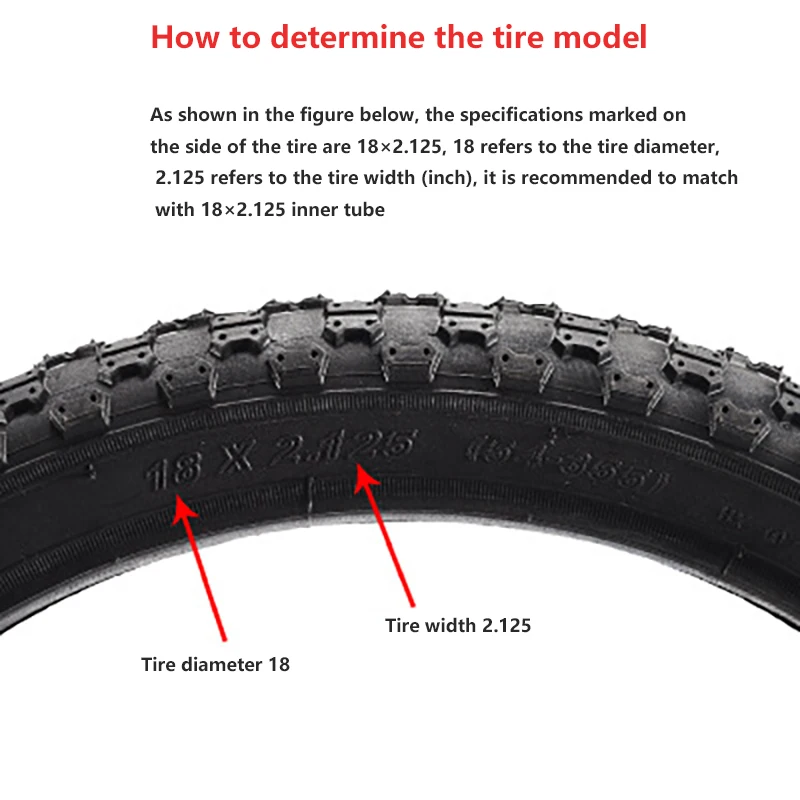Created by Steven Wooding
Reviewed by Dominik Czernia, PhD and Jack Bowater
Last updated: Nov 05, 2022
Table of contents:Using our tire size calculator, you can find the tire measurements of your car tire, such as its diameter, sidewall height, and circumference. It's also a tire size comparison calculator, allowing you to compare your current tire with the one you are thinking of buying. It tells you whether the new tire will be a good fit, and how it might affect your speed dial.
The text below also explains:
So let the tremendous tire comparison begin!
You've probably seen this strange set of numbers and letters on your car's tires and wondered what they mean. It's called a tire code, and it specifies the size and type of tire. Getting properly sized parts for your vehicle is crucial, so make sure to visit the wheel offset calculator to get that right, too.
Let's go through each part of the code and make you a tire code expert.
The first letter is optional, so you might not always see it. It gives information about the intended use or the class of vehicle the tire fits. Possible values are:
Up next is a 3-digit number that indicates the width of the tire in millimeters, measured at the widest point of the sidewall (technically called the "nominal section width"). Expect the width of the tire actually in contact with the road to be smaller than this value.
Expect the width of the tire actually in contact with the road to be smaller than this value.
Next is a forward-slash for character separation, then there's a 2- or 3-digit number representing the profile of the tire. This number is the ratio of sidewall height to the tire's width as a percentage (also called the aspect ratio). So, for example, if the value was 50%, the sidewall height would be half of the width. If it is not present, you can assume a profile ratio of 82%. If the number is more than 200, then it represents the tire's diameter in millimeters.
Following the profile ratio, you may see an optional letter indicating the type of tire construction. Radial (R) is now the most common and the standard design for car tires today, with over a 98% market share. Here is a summary of radial and some other constructions you may see:
The wheel diameter is indicated by the final 1- or 2- digit number, in inches. You might also see the wheel (or rim) diameter given to an accuracy of half an inch. In some rare cases, the number is three digits long. In that case, it represents the wheel diameter in millimeters.
You might also see the wheel (or rim) diameter given to an accuracy of half an inch. In some rare cases, the number is three digits long. In that case, it represents the wheel diameter in millimeters.
So that's the tire code and tire size explained.
If you found this calculator useful our fuel cost calculator may also be of interest to you.
Let's learn how to find tire sizes. We've got the tire code and the data required for us to calculate various tire measurements, such as the tire diameter and sidewall height.
To calculate the sidewall height, we multiply the profile ratio by the tire width (dividing by 100 as the ratio is a percentage). The formula is, therefore:
sidewall height = profile ratio × width / 100So, for the tire code shown in the figure above, P215/65R15, you would calculate the sidewall height as:
sidewall height = 65 × 215 / 100 = 139.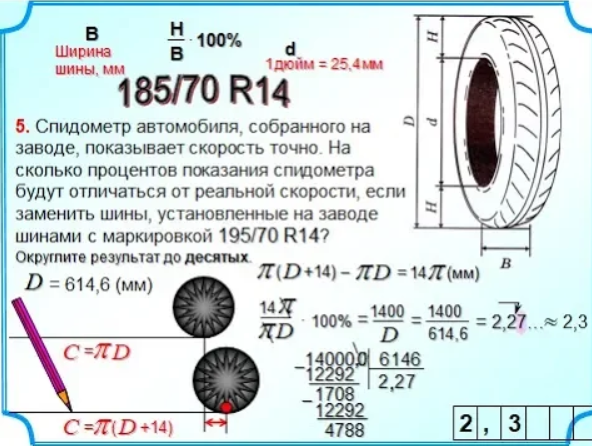 75 mm
75 mmConverting to inches (divide by 2.54 × 10), that's 5.5 inches. We know the diameter of the wheel is 15 inches, so the diameter of the tire is given by:
tire diameter = wheel diameter + (2 × sidewall height)So, for our example, that's:
tire diameter = 15 + (2 × 5.5) = 26 inchesTo calculate the circumference, we use the classic circle equation:
circumference = π × diameterSo, for our exemplary tire, the tire circumference is:
circumference = 3.1416 × 26 = 81.7 inchesOur tire size calculator can also tell you how many revolutions a tire completes in a mile (or kilometer). This value is found by converting a mile into inches and dividing the result by the tire's circumference:
revolutions number = 63360 / 81.7 = 775Using our tire size calculator is easy:
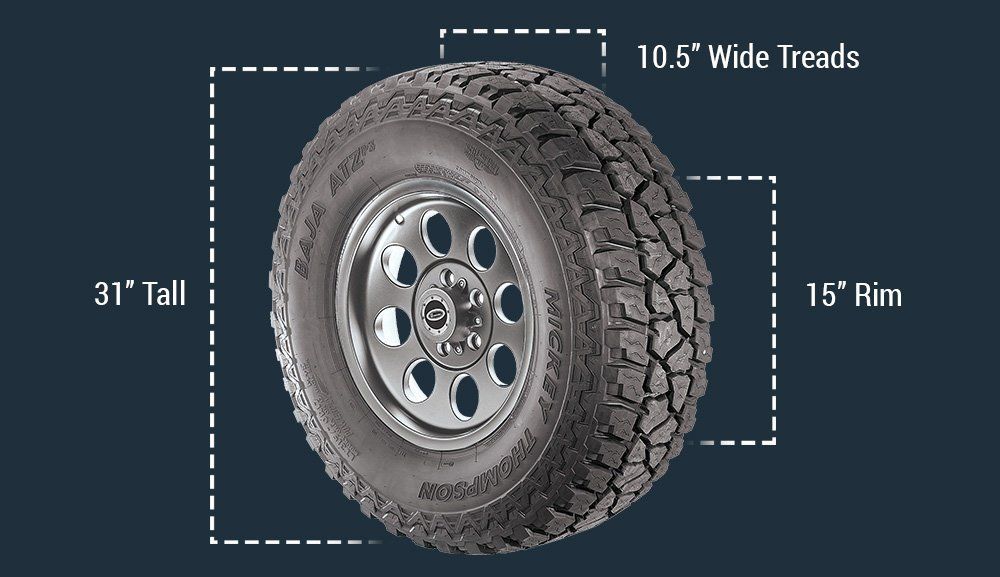 You may also specify the construction type of the tire, though it will not affect any tire's size dimensions.
You may also specify the construction type of the tire, though it will not affect any tire's size dimensions.Want to compare one tire with another one? Then select "Yes" when asked, "Compare with another tire?". The same inputs and outputs will appear for the second tire.
At the end of the tire size conversion calculator, you will see the absolute difference in the diameters of the two tires and the corresponding percentage change. Note that if you are looking to put this second tire on your vehicle, the difference in tire diameter should be no more than 2.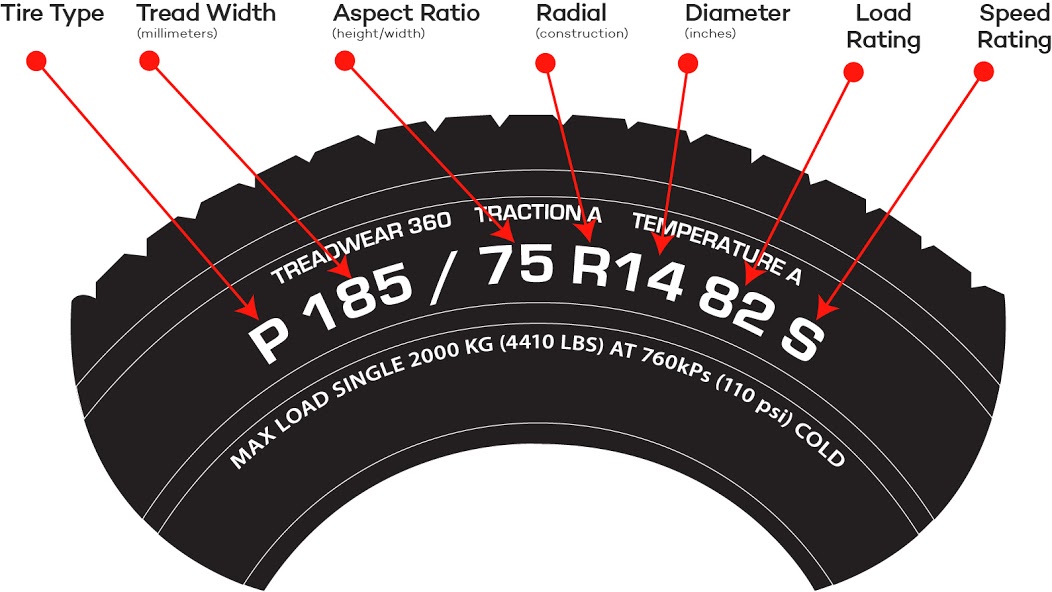 5% smaller or larger. If it is larger, the tire might foul the wheel arch of your car, or the tire may be too weighty for the car's suspension and shock absorbers. Too small a tire size may mean the vehicle's ground clearance is not practical (scrapping speed bumps) anymore.
5% smaller or larger. If it is larger, the tire might foul the wheel arch of your car, or the tire may be too weighty for the car's suspension and shock absorbers. Too small a tire size may mean the vehicle's ground clearance is not practical (scrapping speed bumps) anymore.
Changing the tire diameter will also affect the speedometer reading when compared to the actual speed of the car. Fortunately, this is also a tire size speedometer calculator too! Enter a speed into the "Speedometer reading" row, and you see the actual speed displayed. This information could be important when keeping to speed limits. If it is a modern vehicle, you might be able to set the tire diameter size in the car's electronics system. Your garage should be able to help you out, depending on the make and model of your vehicle.
✅ Now that you know your tire size, you can use it in the speedometer gear calculator to find the right gear for your vehicle, too!
Let's take a more in-depth look at the tire comparison feature by comparing two tires with the tire codes 195/65R15 and 195/85R15. If you enter these values into the tire size calculator, we can check them out in more detail.
If you enter these values into the tire size calculator, we can check them out in more detail.
The diameter calculated for the first tire is 25 inches, and the second one is just over 28 inches in diameter. That's a difference of over 3 inches. You'll see that's a 12.3% difference - well over the recommended amount. The percentage change is calculated like this:
percentage change = 100 × absolute difference / first tire diameterSo, for this example, inputting the values gives:
percentage change = 100 × 3.07 / 25 = 12.3 %This percentage change in tire diameter is also the difference between the speedometer reading and the actual speed of the car. For example, if the speedometer says 30 mph, the actual speed will be:
actual speed = 30 × (1 + (12.3 / 100)) = 33.69 mphSteven Wooding
Profile ratio
Wheel diameter
Tire construction
Tire diameter
Sidewall height
Circumference
Revolutions
Tire comparison
Compare with another tire?
Check out 23 similar transportation calculators 🚘
0-60Boat speedBrake specific fuel consumption… 20 more
Installing the right tires on your vehicle is essential to the overall performance and safety of your vehicle. Your tire choice should reflect the conditions in which you drive and your preferences for vehicle response and handling. To make the most informed decision, though, you must understand how to read tire size when it's time to buy tires.
Your tire choice should reflect the conditions in which you drive and your preferences for vehicle response and handling. To make the most informed decision, though, you must understand how to read tire size when it's time to buy tires.
Thankfully, determining the correct tire size for your vehicle is relatively simple. All the information you need is immediately available either in your owner's manual or somewhere on the vehicle itself. Already know how to read tire size numbers? Skip the explanation and find the right Bridgestone tire for your vehicle online or by visiting a Bridgestone tire dealer near you.
While actual, physical measurements like width and diameter are factors in finding the right tire size, there are additional details to consider. Knowing how to read car tire sizes also means understanding terms like load index and speed rating that affect your vehicle's overall capabilities.
No matter what vehicle you drive, finding the manufacturer-recommended tire size should be easy.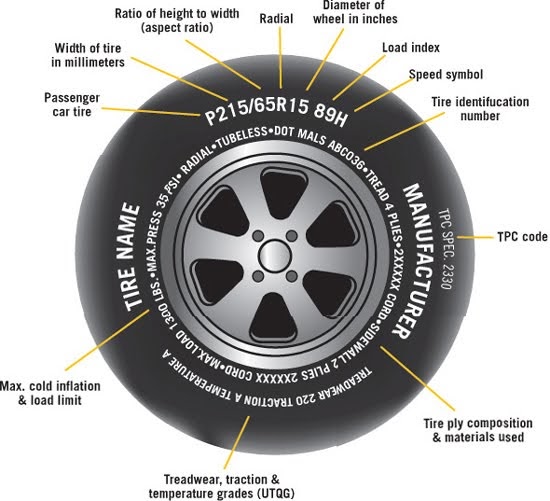 The best place to start looking is the owner's manual.
The best place to start looking is the owner's manual.
Don't worry if you can't locate the manual; you may also find a tire fit guide in these locations:
You can also find tire size data on the sidewall of your current tires (assuming they're the proper size). However, no matter where you find your tire size, you will have to decipher a sequence of numbers and letters. Don't worry if it looks confusing at first — every letter and number has a straightforward meaning. Let's break down how to read car tire size.
Let's take a look at what each number or letter stands for, one by one, in the order they appear in your tire size data. We'll be using this tire size as an example: P225/70R16 91S.
For most vehicles, you'll see the letter "P" before the number sequence begins: P225/70R16 91S. The "P" is short for "P-metric," which is a designation by the Tire and Rim Association for a "passenger car" tire type. A "P" signifies the tire was designed to primarily be used on passenger vehicles, which can include cars, minivans, SUV's and other light-duty pickup trucks.
A "P" signifies the tire was designed to primarily be used on passenger vehicles, which can include cars, minivans, SUV's and other light-duty pickup trucks.
If you see "LT" instead of "P," it's because you need "light truck" tires – "LT" is short for "LT-metric," which is a designation by the Tire and Rim Association for a "light truck" type tire. Light truck tires are designed to be used on vehicles capable of carrying heavy cargo or pulling trailers.
Similarly, "T" stands for "temporary" and is for your spare tire. If you see "ST," that means "special trailer." A special trailer tire is never installed on the drive or steer wheels. It's only intended for use on trailer axles.
The first number to appear in your tire size information is the width, in millimeters, of the correct tires for your vehicle: P225/70R16 91S.
Tire width always refers to the measurement from one sidewall to another. Thus, a tire with the measurement "P225" is for a passenger vehicle and has a nominal width of 225 millimeters.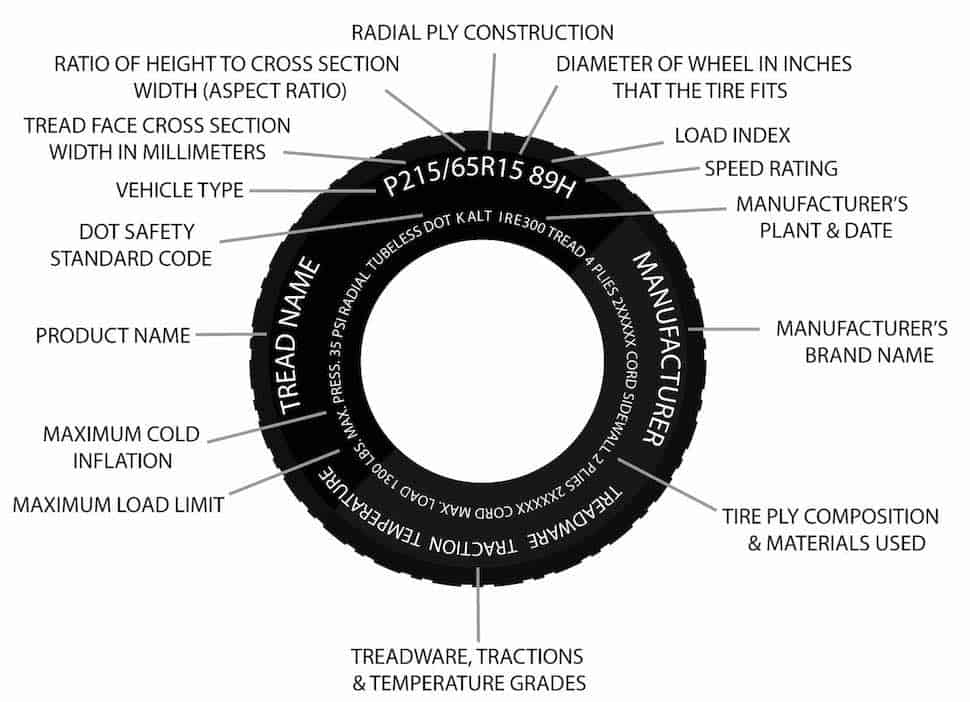
After the slash mark, the next number you see is for the tire's aspect ratio, which essentially tells you how tall your tire's profile is: P225/70R16 91S. Aspect ratios are delivered in percentages. Tire makers calculate the aspect ratio by dividing a tire's sidewall height by its width. If a tire has an aspect ratio of 70, it means the tire's height is 70% of its width.
Lower aspect ratio tires, such as a 60 series, generally offer vehicle handling performance advantages over higher aspect ratio tires, such as a 75 series.
After the aspect ratio comes a letter to indicate the tire's construction: P225/70R16 91S. "R" refers to the internal structure of your tire and gives you a general idea of its stability.
There are two types of construction that you may see on the sidewall of a tire
"Bias-ply" tires were used on automobiles and light trucks until the '70s," reports the classic car site, Hemmings. But radial tires represent the vast majority of tires on the road in the United States today. In fact, you will almost always see the letter "R" on tires as radial tires have been the industry standard for over 40 years. Radial construction means the tire's internal ply cords are oriented in a radial direction (at 90 degrees to the centerline of the tread).
But radial tires represent the vast majority of tires on the road in the United States today. In fact, you will almost always see the letter "R" on tires as radial tires have been the industry standard for over 40 years. Radial construction means the tire's internal ply cords are oriented in a radial direction (at 90 degrees to the centerline of the tread).
The next number is the wheel’s diameter. For example, a tire with the P225/70R16 91S would fit a rim with a 16-inch diameter.
Take note: if you decide to change your rims' size, you will also need to get new tires that are compatible with the change in size. Tires designed to fit a 16-inch wheel diameter will not stretch to fit on new 18-inch rims.
View Other Common Diameter Sizes:
14-Inch Diameter Tires
15-Inch Diameter Tires
17-Inch Diameter Tires
18-Inch Diameter Tires
19-Inch Diameter Tires
20-Inch Diameter Tires
21-Inch Diameter Tires
22-Inch Diameter Tires
The next figure needed to read tire size numbers is your tire's load index. The load index tells us how much weight, in pounds, the tire can support when fully inflated: P225/70R16 91S.
The load index tells us how much weight, in pounds, the tire can support when fully inflated: P225/70R16 91S.
It is called the load "index" because the figure doesn't tell us the precise number of pounds the tire can support, at least not by itself. Instead, the number corresponds to a specific load capacity listed in an index. Beginning with one and ending with 150, numbers in the load index represent carrying capacities of 99 to 7385 lbs.
Additionally, you may not find this number present on all tires. This is because the load index is not required by law to be printed on tires. If there is no load index measurement on your tires, check the owner's manual or contact your local Bridgestone tire dealer for more information.
The final figure in a tire size sequence is the speed rating indicated by a letter: P225/70R16 91S. Just as your load index number corresponds to a particular load, your speed rating letter corresponds to a specific speed capability based on a standardized laboratory test.
For example, a tire with a speed rating "S" is rated for up to 112 mph, while a tire rated "R" is up to 106 mph. Remember that this isn't a recommended cruising speed, but rather the maximum speed that tire type can withstand. Of course, you should always follow legal speed limits on roadways.
Here are the most common letters for speed ratings and their corresponding maximum speeds:
Tires with higher speed ratings tend to offer increased handling performance. Replacement tires must have the same or higher speed rating to maintain vehicle speed capability. If a vehicle has tires with different speed ratings, the speed rating of the "slowest" tire dictates the vehicle's top speed.
Like the load index, the speed rating is not required by law to be listed on all tires. If your tires do not have the speed rating listed, your owner's manual will have the relevant information for your model's stock tire type.
If your tires do not have the speed rating listed, your owner's manual will have the relevant information for your model's stock tire type.
You may find "M+S" or "M/S" after the main tire size sequence on some tires. This indicates that the tire has some capacity to handle snow and mud conditions. This indication is common on most radial or "R" type tires.
You may notice another set of letters and numbers on your tire's sidewall beginning with "DOT." This is not an indication of tire size, but rather that the tire complies with Federal Motor Vehicle Safety Standards. The "DOT" stands for Department of Transportation and is followed by the tire identification number.
The first two letters or numbers after DOT refer to the manufacturing plant where the tire was produced and the last four numbers indicate the week and year the tire was made. The numbers 4318, for instance, indicate that the tire was manufactured during the 43rd week of 2018.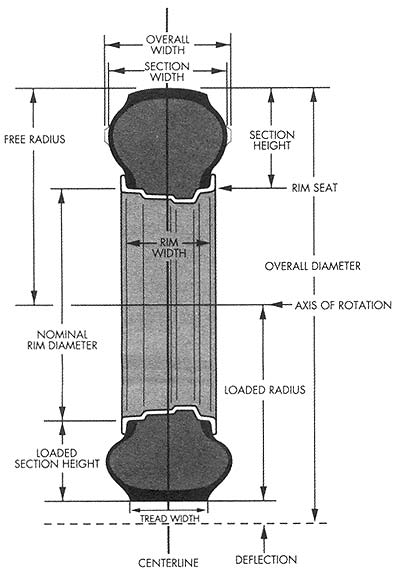
While it's certainly possible to upgrade your tires' size, it's usually best to stick to your manufacturer-recommended tire size for optimal performance. Increasing the size of your tires may give your car more ground clearance, but it may also affect handling, drivetrain performance and fuel economy. Keep in mind the changes to key figures mentioned above, such as load index and speed rating, and how they may affect your vehicle's capabilities if you decide to increase tire size.
Once you know how to read the numbers on tires, you can explore tires by size and narrow down your tire options quickly. Compare tire sizes online or visit a Bridgestone tire dealer near you for help.
Author: Sochi Auto Remont
Heading: Tips for a car enthusiast
First of all, we find the exact size of the wheel diameter, and then we go to buy the appropriate tires. How correctly you do this, how correctly and steadily your car will behave on the road. The diameter of the wheel is a composite value, which is why care is required in the calculations. How to determine the diameter of the wheel is our topic today. nine0003
How correctly you do this, how correctly and steadily your car will behave on the road. The diameter of the wheel is a composite value, which is why care is required in the calculations. How to determine the diameter of the wheel is our topic today. nine0003
Determining the diameter and choosing the right tires!
Step-by-step instructions on how to determine the diameter of a wheel
How to determine the diameter of a wheel
Step 1. The simplest formula is used for calculations: it is necessary to add the sum of two tire profile heights to the diameter of the wheel. This method is applicable only when calculating for passenger cars.
Step 2. Take a tape measure for the usual way of measuring the diameter of the wheel. Each parameter taken from the formula must be measured separately. The values that you get must be converted to inches (since the unit of measurement for the diameter of a car wheel is an inch). We translate into inches as follows: divide each number obtained by 2.54. Then you need to add together the values obtained as a result of the measurement. The resulting number is the diameter of your wheel. nine0003
We translate into inches as follows: divide each number obtained by 2.54. Then you need to add together the values obtained as a result of the measurement. The resulting number is the diameter of your wheel. nine0003
Step 3. You don't have to do mathematical calculations, just apply an even simpler calculation formula. How to determine the diameter of the wheel using the second formula - you need to take the number that indicates the width of the rim, and add 20% to it, so you get the full width of your wheel. If the tire width is narrow, then the difference between the total width of the wheels and the width of the rim will be 15%.
Step 4. Experts do not recommend making the wheel diameter larger than the allowable limits. The permissible norm is to increase the diameter of the wheel by a maximum of several centimeters. A wheel size that exceeds the allowable values will have a bad effect on the chassis of the car, as well as touch the wheel arches. It will be necessary to change the alignment of the car, which will then affect fuel consumption.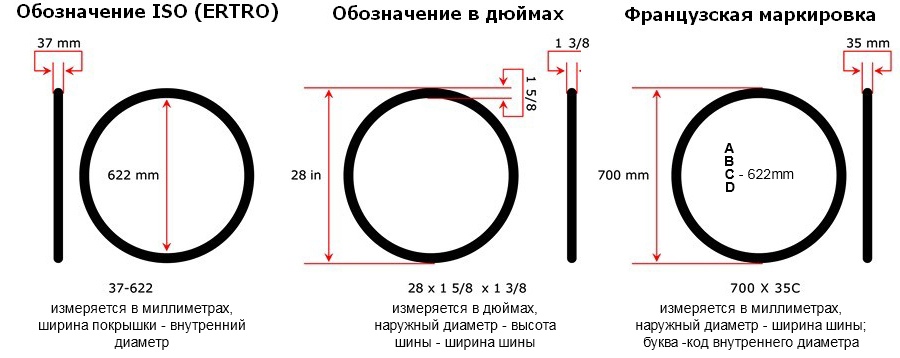 nine0003
nine0003
Step 5. When maximizing the diameter of the rim, choose an appropriately low profile tire compared to the standard tyre. Do not forget that low-profile tires do not have the same margin of safety as a standard tire. It is necessary to maintain a balance between the overall diameter of the wheel and disk. Plus, low-profile tires, along with the maximum diameter of the disk, deprives you of the usual comfort, and also affects the chassis.
Step 6. Wheel rim diameter is an important part of a car wheel. You need to know and remember that wheel parameters in terms of rim diameter can vary from 10 to 23 inches. The parameters of small indicators refer to motorcycles and mopeds. Large indicators are used among powerful vehicles. nine0003
Useful tips for car owners.
If you have doubts about your calculations, you can always turn to specialists. How to determine the diameter of the wheel - experienced specialists at a glance can give you accurate information on your wheels. To do this, you can drive to any auto service or car service station. There you will receive the exact information you are interested in.
To do this, you can drive to any auto service or car service station. There you will receive the exact information you are interested in.
We told you how to determine the diameter of the wheel, try it! nine0003
Like the article? Share with your friends on social networks!
Valery Leonidov
31 August 2017 11:21
A large number of manufacturers, shapes, sizes, patterns and other indicators of car tires are shocking for an inexperienced car owner. The right choice is the key not only to a long service life of the wheels, but also to safety while driving, since the appropriately selected rubber tread is responsible for the car's grip on the road. For the right choice, you need to take into account some subtleties, determine the priority characteristics that rubber should have. nine0003
Today there are a lot of options to get the necessary information. For example, you can consult online, on the site, but in any case you should know what to ask.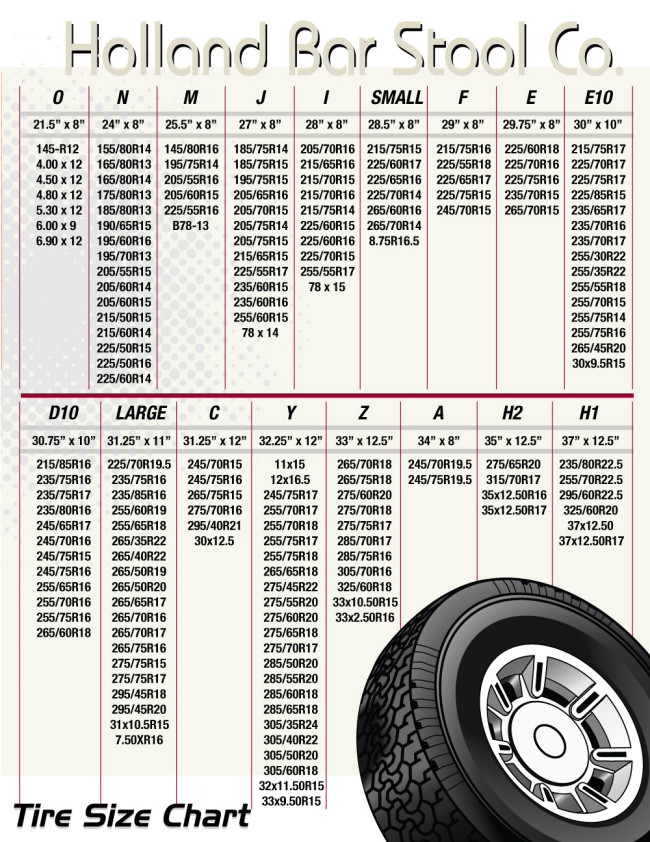 If you are changing tires or rims from smaller to larger and vice versa, you need to know a thing or two about sizing and other intricacies of selection. As a rule, cars are produced with factory wheels, which are somewhat smaller than we might like. Such a replacement carries more aesthetic meaning, but it still has practicality. nine0003
If you are changing tires or rims from smaller to larger and vice versa, you need to know a thing or two about sizing and other intricacies of selection. As a rule, cars are produced with factory wheels, which are somewhat smaller than we might like. Such a replacement carries more aesthetic meaning, but it still has practicality. nine0003
Larger wheels up to 18 inches have a positive effect on cornering, traction, braking performance, ride comfort and steering feel, while negatively affecting acceleration and fuel economy due to the greater weight of the wheels themselves. In 19 inches and up, tests have shown that the positive improvements have disappeared, and acceleration and fuel economy have deteriorated. So the large diameter of the wheels and tires, apart from beauty, does not carry anything in itself. Car owners usually set a smaller radius if they have a second set of tires, such as winter tires that they install every winter. Winter tires tend to get a lot more expensive at sizes over 17 inches.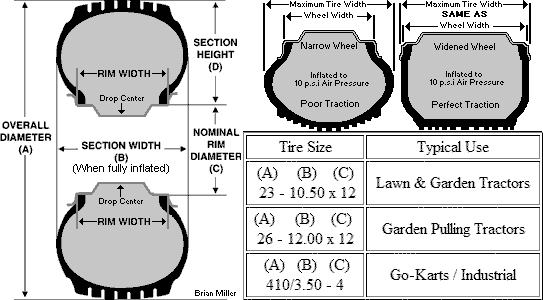 In addition, the wider the tire, the more effective it is on snow and ice. nine0003
In addition, the wider the tire, the more effective it is on snow and ice. nine0003
So if you have 18" or 19" wheels and want an extra set of wheels for winter tires, it's a good idea to go down to 17" or 16" wheels. These diameters are not only cheaper, easier to find, but also have better grip than other sizes.
Speedometer, odometer, traction control, torque and gear settings are based on the distance your tire travels in one full revolution, which is determined by the outside diameter of the tire and wheel combined. A tire with a different outer diameter will travel a different distance compared to one revolution with different torque. When changing the diameter of your rims, you must make sure that the new wheels in the assembly have the same overall diameter as the old one or your speedometer, otherwise the readings of these gauges will not be correct. nine0003
